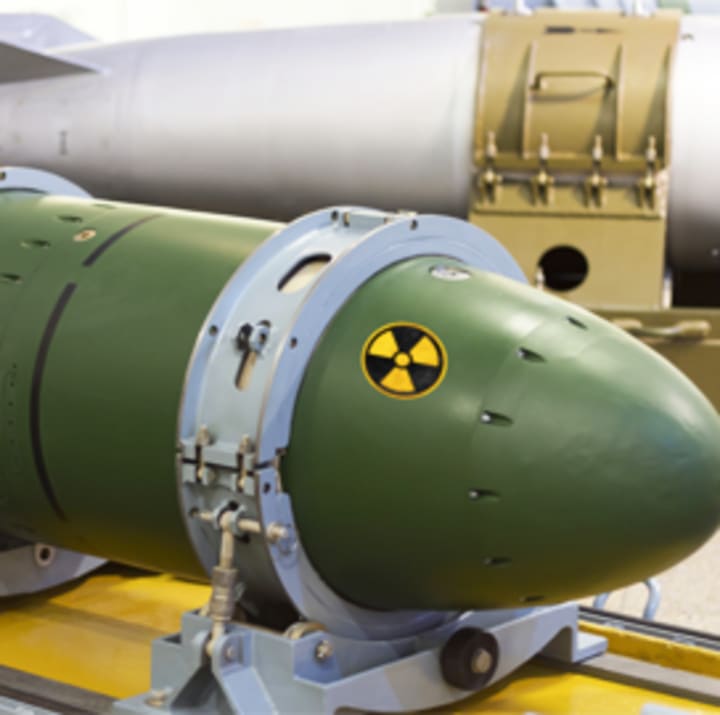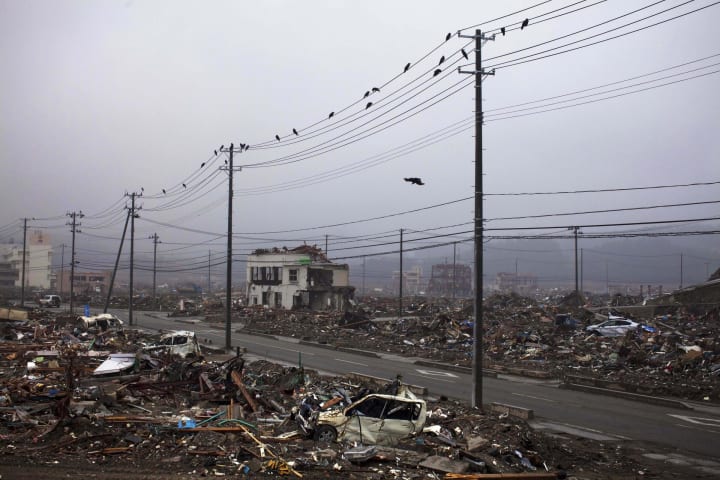Preparing For The Big Blast
Tips For Surviving Nuclear War

Nuclear war has been on everyone’s mind since Putin invaded Ukraine earlier this year. The threat of nuclear war has been around since WW2 when America vaporized two Japanese cities shortly after the attack to Pearl Harbor. In the 50s, nuclear weapons were so feared that bunkers were being constructed in backyards, as schools were holding routine drills on what to do should a bomb drop in the area. Today, the threat of nuclear war is still at an all-time high as military experts say it’s no longer if the bombs fall, it’s when. Here is some advice you can use to help get you through the big one.
Treat It Like Any Other Disaster

Nuclear bombs will devastate everyone, even if you don’t live in the state it happens in. Various trade routes that cross multiple states from coast to coast connected our country. We will feel the aftermath for months, if not years, so it’ll be best to have at least a month’s worth of supplies and food on hand. We will divide the fallout into three zones; red (vaporized), yellow (moderate to severe), and green (little to no fallout risk). Those in the yellow (and the few who survived in the red) will probably be ordered to shelter in place while FEMA and radiation experts are called in to assess whether it’s safe to get them out. You should take potassium iodide each day you are exposed to radiation to lower the risk of radiation poisoning. While evacuating, use a Geiger Counter to check your path and avoid heavily contaminated areas.
The Types Of Nuclear Weaponry

There are three main types of nuclear bombs. The Fission, or A-Bomb, is the most common type. The A-Bomb is usually incorporated into other weapons classes, like missiles. Its power comes from splitting heavy nuclei (found in Plutonium and Uranium) with neutrons. Fusion, or H-Bombs, are known as thermonuclear weapons. It uses the incredible heat of a fusion spark plug that compresses and heats isotopes of hydrogen (such as Deuterium and Tritium), which fuses together and detonates. The third type is a fairly new threat called an Electromagnetic Pulse, or EMP for short. It is an A or H-Bomb that is launched and detonated just outside the atmosphere of a target city or state. When it goes off, it admits a high energy wave that destroys all unprotected electronics and power grids in its path, causing a blackout for an undetermined length of time.
The Bomb Is Coming!

A nuclear bomb will strike with little to no warning. If you hear the sirens or receive an alert about an approaching bomb, seek shelter immediately. You’ll want to go inside the nearest building made of brick or concrete. Put as many walls as you can between you and the bomb outside. Head to a closet in the center of the home, or building, or head to the basement. If you are lucky enough to have one, go into your well-stocked bomb shelter. Most homes built in the 50s and 60s are likely to have an underground bunker. As tempting as it is, never look out the windows because this could lead to a face full of broken glass or blindness. Stay indoors until given the all-clear to come out by the proper authorities. Leave the children at their school or daycare as they will be the safest there. Venturing outside before the all-clear can cause death from nuclear poisoning or exposure.
The Aftermath

Shelter in place for at least two days after the last explosion (if there was more than one) to limit exposure to radioactive materials. Only go outside if you have to for the next 90 days, as this is how long it takes for it to decay in the atmosphere. Do not eat open foods or drink water from the tap or other outside sources, not even if you properly treated it for exposure. Stick with those items that are properly sealed before the bombs went off. If going outside, cover as much skin as possible. Wear a respirator for N/B/C (Nuclear/Biological/Chemical) uses. Avoid tall grassy areas or those that set off your Geiger Counter. When coming back inside, remove your clothing by cutting them off and sealing them in a plastic baggie to be destroyed later. Take a decontamination shower to limit the spread of radiation within your safe space. Clothing exposed to high levels of radiation needs to be burned in an incinerator.
Nuclear Fallout

Fallout is radioactive debris produced by the explosion affecting those in red and yellow zones. They could also affect the people in the green zone, but not as bad as they would be in the other two. If you are in the red and yellow zones, you’ll have the best chance of survival is by staying put and waiting for help. If you can’t do that or were told to evacuate, run in the direction perpendicular and upwind from the dust cloud. You’ll want to avoid the dust clouds as best as you can, and limit your exposure if in one, as they will be full of fallout. Radiation, or nuclear poisoning, is common in those who are exposed too long or to too much fallout. If you’re exposed to large amounts of nuclear fallout, you’ll develop a condition called Acute Radiation Syndrome (or Radiation Sickness for short). The amount of radiation you absorb (the absorbed dose) will determine how sick you’ll become. Common symptoms are, but are not limited to:
- Nausea
- Vomiting
- Hair loss
- Low blood count
- Bruising
- Changes in kidney function
If exposed to extremely large doses of radiation, death can happen in minutes or days. To treat mild cases, you’ll be prescribed medications like Filgrastim and Cyclizine. A blood transfusion will be necessary to treat anemia and bleeding disorders. You’ll also want to get yourself regularly screened for cancer by an oncologist.
About the Creator
M.L. Lewis
Welcome to my little slice of pie. This blog will primarily focus on prepping and homesteading skills with a sprinkle of fiction every now and then.






Comments
There are no comments for this story
Be the first to respond and start the conversation.